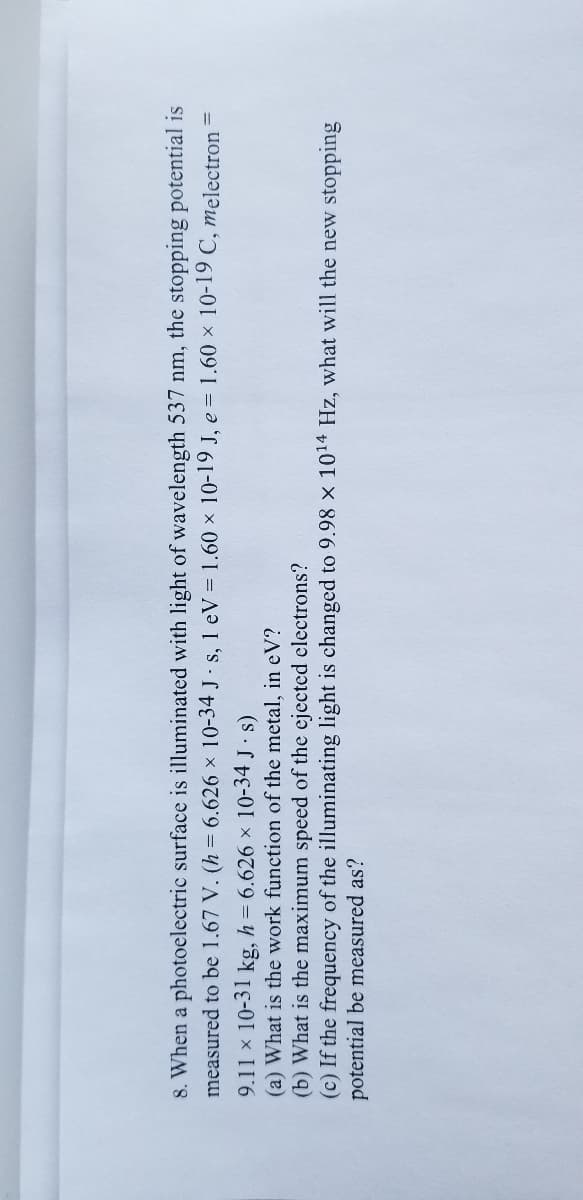8. When a photoelectric surface is illuminated with light of wavelength 537 nm, the stopping potential is measured to be 1.67 V. (h = 6.626 x 10-34 J. s, 1 eV = 1.60 x 10-19 J, e = 1.60 x 10-19 C, melectron = 9.11 x 10-31 kg, h = 6.626 x 10-34 J s) (a) What is the work function of the metal, in eV? (b) What is the maximum speed of the ejected electrons? (c) If the frequency of the illuminating light is changed to 9.98 x 1014 Hz, what will the new stopping potential be measured as?
8. When a photoelectric surface is illuminated with light of wavelength 537 nm, the stopping potential is measured to be 1.67 V. (h = 6.626 x 10-34 J. s, 1 eV = 1.60 x 10-19 J, e = 1.60 x 10-19 C, melectron = 9.11 x 10-31 kg, h = 6.626 x 10-34 J s) (a) What is the work function of the metal, in eV? (b) What is the maximum speed of the ejected electrons? (c) If the frequency of the illuminating light is changed to 9.98 x 1014 Hz, what will the new stopping potential be measured as?
Related questions
Question
100%

Transcribed Image Text:8. When a photoelectric surface is illuminated with light of wavelength 537 nm, the stopping potential is
measured to be 1.67 V. (h = 6.626 x 10-34 J · s, 1 eV = 1.60 × 10-19 J, e = 1.60 x 10-19 C, melectron =
9.11 x 10-31 kg, h = 6.626 x 10-34 J s)
(a) What is the work function of the metal, in eV?
(b) What is the maximum speed of the ejected electrons?
(c) If the frequency of the illuminating light is changed to 9.98 x 1014 Hz, what will the new stopping
potential be measured as?
Expert Solution
This question has been solved!
Explore an expertly crafted, step-by-step solution for a thorough understanding of key concepts.
This is a popular solution!
Trending now
This is a popular solution!
Step by step
Solved in 2 steps
